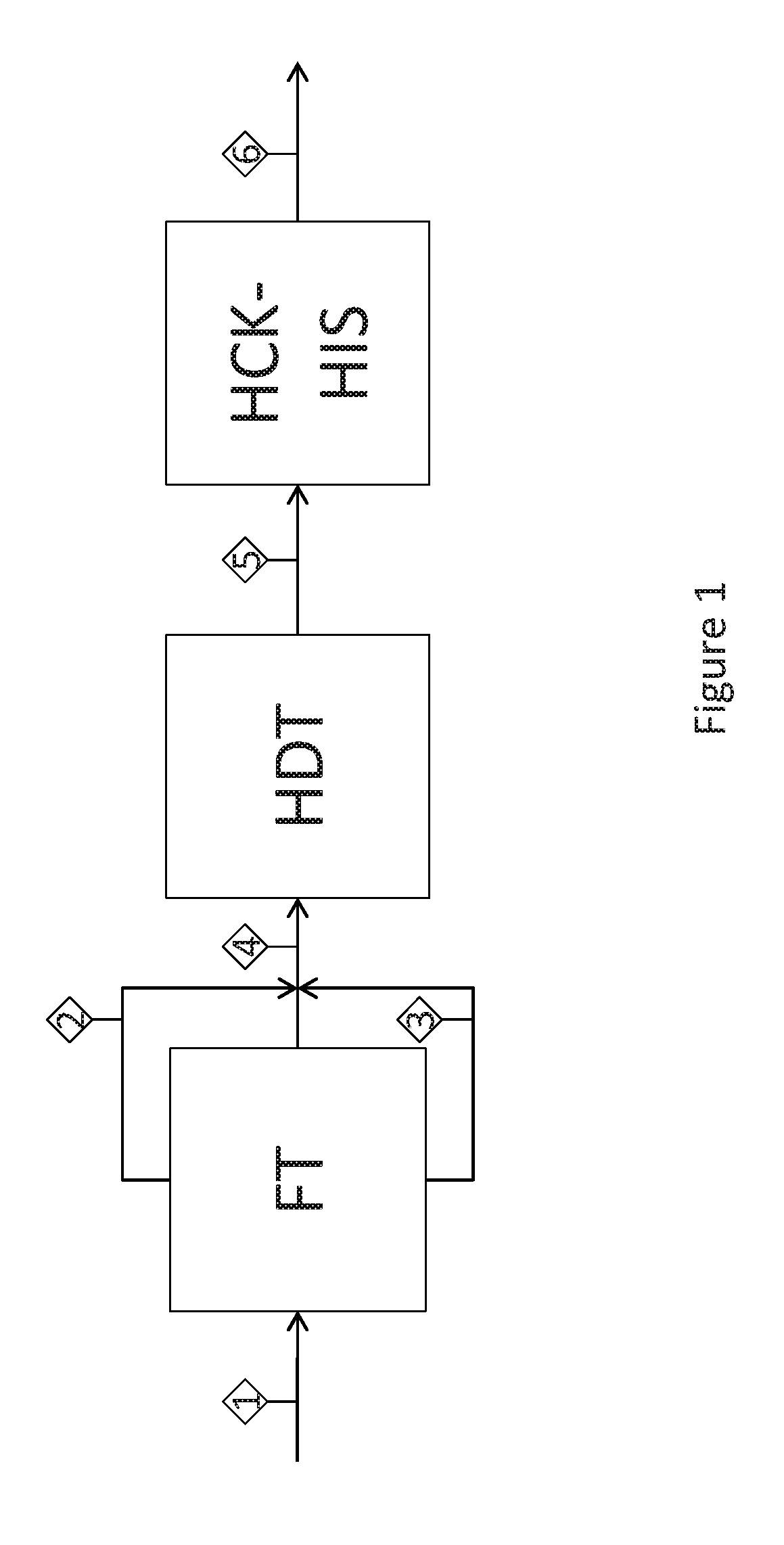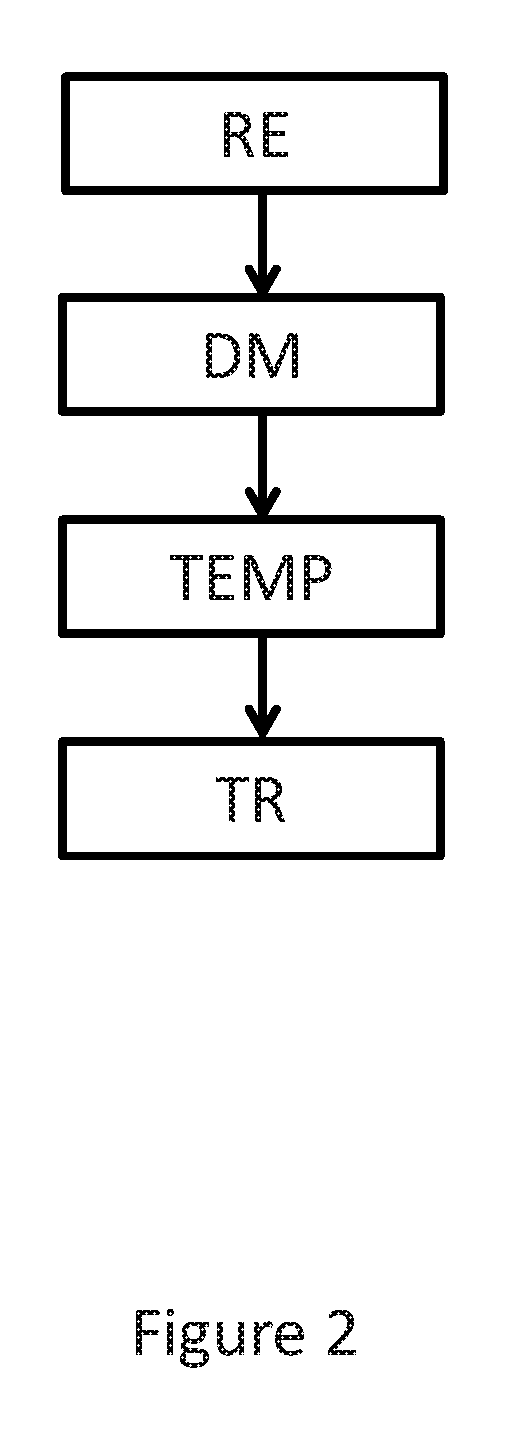Method for starting up a method for producing kerosene and diesel fuel from hydrocarbon compounds produced by fischer-tropsch synthesis
a hydrocarbon compound and hydrocarbon compound technology, which is applied in the direction of hydrocarbon oil treatment products, physical/chemical process catalysts, metal/metal-oxide/metal-hydroxide catalysts, etc., can solve the problems of reducing the catalytic performance, degrading the catalytic performance, and running the risk of poisoning the catalyst, so as to reduce the catalytic performance , the effect of high exothermicity of the reaction
- Summary
- Abstract
- Description
- Claims
- Application Information
AI Technical Summary
Benefits of technology
Problems solved by technology
Method used
Image
Examples
examples
Example According to the Invention
[0124]In step FT, the method produces a heavy fraction circulating in the pipe 3 corresponding to Fischer-Tropsch waxes and a light fraction circulating in the pipe 2 corresponding to Fischer-Tropsch condensates. The feedstock has the following characteristics.
TABLE 1Characteristics of the FeedstockCondensatesWaxesDensity at 15° C.g / cm30.75130.7613 5.0%° C.68.9287.120.0%° C.128.4359.250.0%° C.217.8431.470.0%° C.272.8475.295.0%° C.368.3577.7370° C.+ Compound% by Weight478Paraffins% by Weight7395Olefins% by Weight204Oxidized Compounds% by Weight71
[0125]In step HDT, an NiMo-type hydrotreatment catalyst on an alumina substrate combined with NiO is used. This catalyst is marketed by Axens under the reference HR945.
[0126]After having carried out the reduction step RE, the start-up step DM is carried out. The heavy fraction coming in via the pipe 3 is brought into contact with the hydrotreatment catalyst in the presence of hydrogen.
[0127]More specifically,...
PUM
| Property | Measurement | Unit |
|---|---|---|
| temperature | aaaaa | aaaaa |
| temperature | aaaaa | aaaaa |
| temperature | aaaaa | aaaaa |
Abstract
Description
Claims
Application Information
 Login to View More
Login to View More - R&D
- Intellectual Property
- Life Sciences
- Materials
- Tech Scout
- Unparalleled Data Quality
- Higher Quality Content
- 60% Fewer Hallucinations
Browse by: Latest US Patents, China's latest patents, Technical Efficacy Thesaurus, Application Domain, Technology Topic, Popular Technical Reports.
© 2025 PatSnap. All rights reserved.Legal|Privacy policy|Modern Slavery Act Transparency Statement|Sitemap|About US| Contact US: help@patsnap.com


